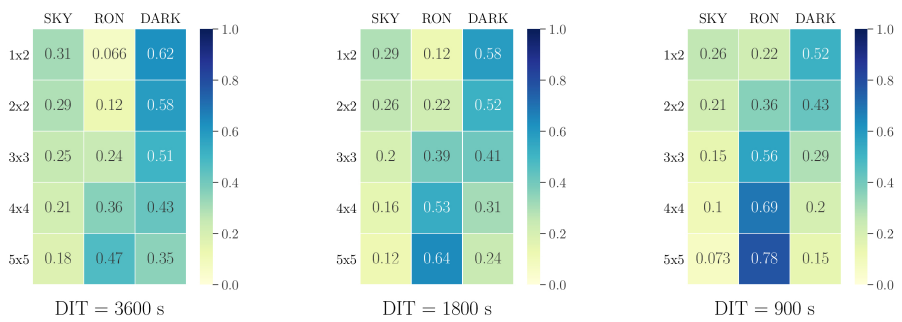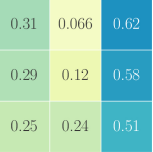| |||||
Simulations
Detailed simulations have been performed to assess the performance of the blue part of the visible spectrograph. To this end, we used the WEBSIM-COMPASS simulator. Our study aimed to understand the behavior of noise, the effects of sky variability, and the scaling between signal-to-noise (S/N) and several other observational (exposure time) and instrumental (resolution R, throughput T%) characteristics. Briefly, an astrophysical target was modeled as a high-resolution data cube, which was subsequently convolved with the point-spread function (PSF) that represented the optical path through the atmosphere and the telescope, including the adaptive optics system. Realistic sky background, photon noise, and detector noise were added. The simulator produced a data cube which we analyzed as if it were real data.
We investigated two different instrument modes: the integral-field unit mode (VIFU) and the multiplex mode (HMM-VIS). We adopted the design of the two modes at the end of Phase A study. For each case, we ran a series of simulations with varying values of the target (intrinsic galaxy shapes and their brightness) and instrumental (exposure time, resolution, throughput) inputs. We analyzed the resulting data cubes.
S/N scaling relations

The plots show the change of S/N as a function of the total exposure time (expressed as NDIT one-hour-long exposures; left panel) and object brightness (middle panel), that was measured for the HMM-VIS mode. The performance of the VIFU mode results in a ~20% higher S/N for the same values of parameters because the integral field unit allows a better background subtraction to the fiber aperture. We also show how smoothing the spectra, and therefore decreasing the spectral resolution, affects S/N (right panel). Note that R=5000 is the nominal spectral resolution of the instrument. The relations have been approximated by a simple power-law with the power-law index b; the scaling relation equations are provided in Japelj et al..
The simulator takes into account sky variability, which can be especially important for the HMM-VIS mode. Simulations have been prepared to test the effect of the variability. Provided the sky conditions are normal, and assuming that the differential response between the fibers can be measured and corrected for to good accuracy, the effect of the sky variability in the blue wavelengths is negligible for targets as bright as 25.5 mag.
Noise regimes

In the case of observations of faint objects, the noise is dominated either by sky background, CCD read-out-noise (RON) or CCD dark current. The graphic shows the relative contribution of the three components to the total noise for different on-CCD binning in the spatial and spectral direction (a fiber is imaged on the detector on 5 x 5 pixels). The calculations show that some level of binning is necessary to avoid the RON to dominate the noise.

